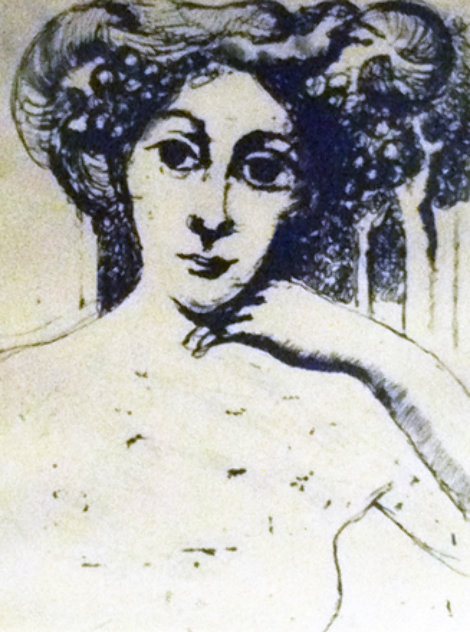

Untitled Portrait
Paul Delvaux
Limited Edition Print : Lithograph
Size : 11.5x8.5 in | 29x22 cm
Framed : 13x10 in | 33x25 cm
Edition : From the Edition of 40
Reduced
- Framed Limited Edition Signed Lithograph $2,500
Hand SignedHand signed in bottom right.
Condition Excellent
Framed with GlassGold frame with tan mat.
Story / Additional InfoPrivate collection.
Certificate of AuthenticityArt Brokerage
LID40513
Paul Delvaux - Belgium
Art Brokerage: Paul Delvaux Belgian Artist: (September 23, 1897 - July 20, 1994). He was a Belgian painter, famous for his surrealist paintings with female nudes. Delvaux was born in Antheit in the Belgian province of Liege, the son of a lawyer. The young Delvaux took music lessons, studied Greek and Latin, and absorbed the fiction of Jules Verne and the poetry of Homer. All of his work was to be influenced by these readings, starting with his earliest drawings showing mythological scenes. He studied at the Academie Royale des Beaux-Arts in Brussels, albeit in the architecture department owing to his parents' disapproval of his ambition to be a painter. Nevertheless, he pursued his goal, attending painting classes taught by Constant Montald and Jean Delville. The painters Frans Courtens and Alfred Bastien also encouraged Delvaux, whose works from this period were primarily naturalistic landscapes. He completed some 80 paintings between 1920 and 1925, which was the year of his first solo exhibition. Delvaux's paintings of the late 1920s and early 1930s, which feature nudes in landscapes, are strongly influenced by such Flemish Expressionists as Constant Permeke and Gustave De Smet. A change of style around 1933 reflects the influence of the metaphysical art of Giorgio de Chirico, which he had first encountered in 1926 or 1927. In the early 1930s Delvaux found further inspiration in visits to the Brussels Fair, where the Spitzner Museum, a museum of medical curiosities, maintained a booth in which skeletons and a mechanical Venus figure were displayed in a window with red velvet curtains. This spectacle captivated Delvaux, supplying him with motifs that would appear throughout his subsequent work. In the mid-1930s he also began to adopt some of the motifs of his fellow Belgian Rene Magritte, as well as that painter's deadpan style in rendering the most unexpected juxtapositions of otherwise ordinary objects. Listings wanted by Art Brokerage.



























